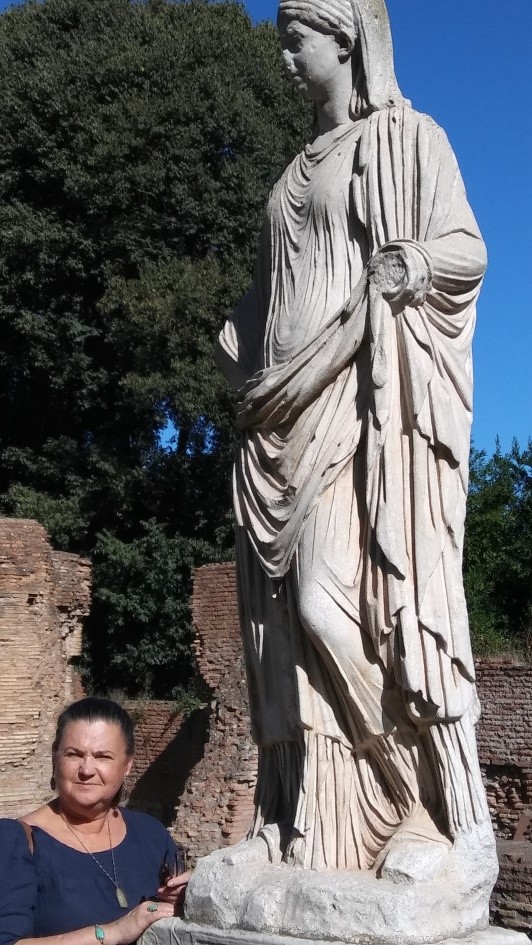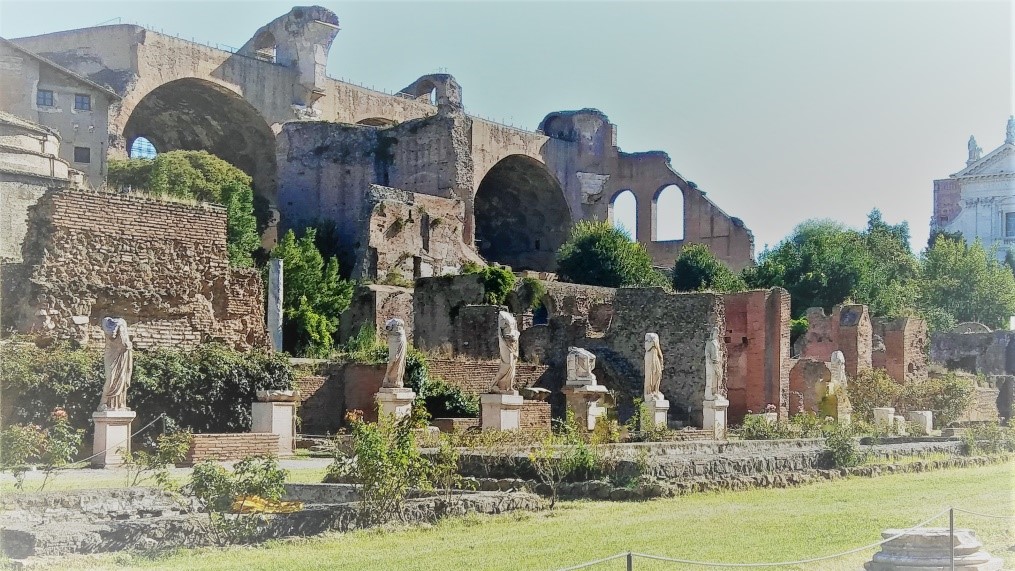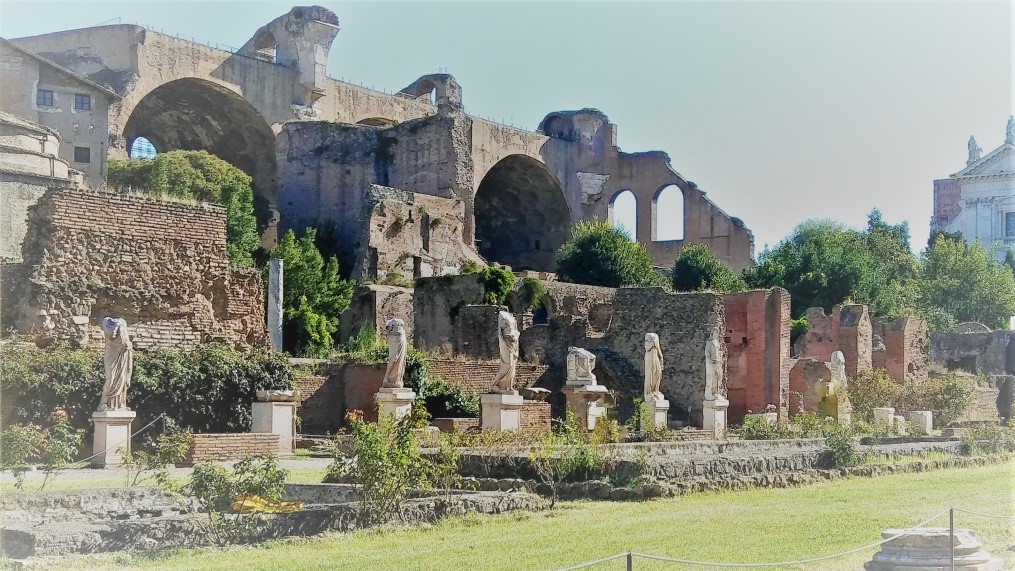
On my recent trip to Rome to finish researching St. Cecilia’s life for my historical fiction novel, Virgin Martyr, I spent some time at the Temple of Vesta and the home of the ancient Roman Vestal Virgins.
One of my purposes in writing this book was to investigate how attitudes about women’s sexuality and social roles developed in the contemporary world. For this reason, in the chapter in which Cecilia is introduced, she is attending the Feast of Lupercalia – the feast of supplication to Vesta for the fertility of Roman women, which was presided over by the Emperor with the Vestal Virgins.

Much can be learned in Rome about how patriarchal systematic oppression has affected women’s lives and spiritual self-expression. It has been the center of patriarchal power for centuries – first through the centuries of emperor worship and then through centuries of the Catholic Magisterium (that was structured on the Roman model of male domination within family and public domains).

Though the Vestal Virgins were highly regarded as priestesses, their lives were quite austere. They were chosen by the emperor himself when they were between the ages of six and ten. They had to be from aristocratic families. Their service lasted for thirty years, after which time they were permitted to marry. One would have to wonder, though, how many of these women in or nearing their forties were courted in a society where widowers often took girls in their early teens for marriage – as soon as they were capable of bearing children.

The vestal virgins were cut off from the world outside their compound (including family and friends), and if the flame of Vesta went out on their watch (which could happen easily), they were flogged. If they were suspected of having any type of relations with a man other than the emperor (who could come and go as he pleased), they were buried alive— and several were.
So here’s a question to consider: Do you see any patterns here that have echoed through the centuries and persist today?






